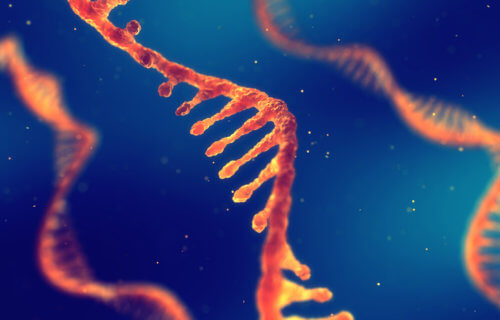EVANSTON, Ill. — The human body has trillions of cells. Each one contains the building blocks of life and now, for the first time, a study has discovered how some of those building blocks operate. Researchers from Northwestern University say they’ve created the first-ever, data-driven videos which reveal how RNA molecules twist and fold to fit themselves inside human cells.
“RNA folding is a dynamic process that is fundamental for life,” says study leader Julius B. Lucks in a university release. “RNA is a really important piece of diagnostic and therapeutic design. The more we know about RNA folding and complexities, the better we can design treatments.”
The team notes that understanding how RNA works inside cells can open the door to curing diseases which target RNA. Those include conditions like spinal muscular atrophy and possibly even strains of the novel coronavirus.
RNA’s surprising twists and turns
Using data from experiments on RNA-folding, the new study generated a series of movies depicting how RNA folds as the “machinery” of cells builds new molecules. Researchers discovered that RNA frequently folds itself into some surprising knots and then somehow unties itself in order to achieve its final structure.
“Folding takes place in your body more than 10 quadrillion times a second,” Lucks explains. “It happens every single time a gene is expressed in a cell, yet we know so little about it. Our movies allow us to finally watch folding happen for the first time.”
These aren’t the first videos of RNA folding however, previous ones come from computer models which based these microscopic movements on approximations and assumptions. Lucks’ team created the technology which records data on RNA folding as these molecules are being created in the body.
Scientists then use tools to gather and organize all that data together to map out how the RNA folds and where it goes in the cell.
“The information that we give the algorithms helps the computer models correct themselves,” the associate professor of chemical and biological engineering adds. “The model makes accurate simulations that are consistent with the data.”
Lots of knots
During the study, Lucks and his team mapped out the folding patterns of an RNA molecule called SRP. This ancient RNA appears in all kingdoms of life, from animals to plants to fungus. Study authors say SRP is famous for its hairpin shape.
Through the new videos, researchers saw how SRP molecules tie themselves into knots and then untie themselves just as fast. The molecule then flips around into the correct hairpin structure using a folding method called toehold mediated strand displacement.
“To the best of our knowledge, this has never been seen in nature,” Lucks concludes. “We think the RNA has evolved to untie itself from knots because if knots persist, it can render the RNA nonfunctional. The structure is so essential to life that it had to evolve to find a way to get out of a knot.”
The study appears in the journal Molecular Cell.
https://youtu.be/2XTi9LG9NnU
